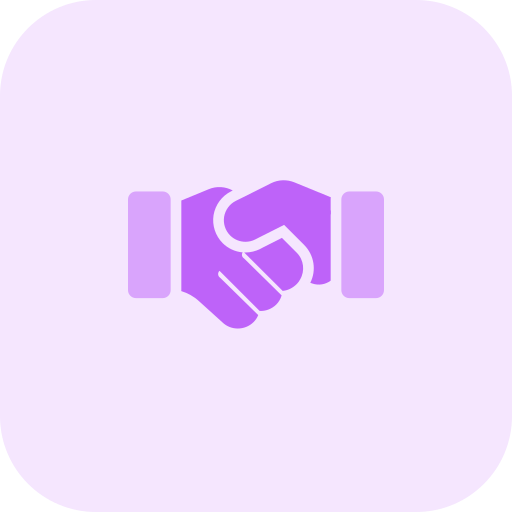
Offshore outsourcing has evolved from being a cost-cutting measure to a strategic necessity for businesses aiming to scale operations, enhance efficiency, and access specialized talent on a global scale. By outsourcing key functions to expert service providers, companies can streamline workflows, optimize resources, and focus on core business objectives. However, selecting the right offshore outsourcing partner is a pivotal decision that can determine the success or failure of your outsourcing strategy.
With a vast array of outsourcing firms available, making the right choice requires careful evaluation of factors such as expertise, reliability, security, and cultural alignment. A well-chosen outsourcing partner can drive innovation, improve service quality, and deliver significant cost savings, while a poor choice can lead to inefficiencies, communication challenges, and missed business goals.
In this article, we will explore the essential steps to choosing the right offshore outsourcing partner, and discuss the key benefits of outsourcing.
Why Offshore Outsourcing Matters
Offshore outsourcing has become a game-changer for businesses looking to stay competitive in a fast-evolving global market. It’s not just about reducing costs, it’s about unlocking new opportunities for efficiency, innovation, and scalability. By leveraging the expertise of specialized service providers worldwide, companies can streamline operations, enhance productivity, and drive sustainable growth.
Here are some of the key benefits of offshore outsourcing:
1. Cost Savings: Outsourcing to regions with lower labor costs allows businesses to reduce operational expenses while maintaining high-quality services. These cost savings can be reinvested into core business functions, product development, and market expansion.
2. Access to Skilled Talent: Instead of being limited to local hiring, outsourcing provides access to a global talent pool with specialized expertise in IT, customer service, marketing, software development, and more. This ensures businesses can leverage the best minds without geographical constraints.
3. Focus on Core Business: By outsourcing non-core functions, organizations can free up internal resources and leadership to focus on strategic growth, innovation, and customer engagement.
4. Scalability & Flexibility: Whether you need to ramp up operations to meet market demand or scale down during slower periods, outsourcing offers the agility to adapt without the long-term commitments and overhead costs of hiring full-time employees.
5. Round-the-Clock Productivity: With teams working across multiple time zones, businesses can maintain 24/7 operations, improve response times, and enhance customer service without delays.
While these benefits make offshore outsourcing an attractive business strategy, achieving success depends on selecting the right outsourcing partner. A misaligned partnership can lead to operational inefficiencies, security risks, and communication challenges.
So, how do you ensure you choose the best offshore outsourcing partner for your needs? Let’s explore the critical factors to consider.
Step 1: Clearly Define Your Goals and Needs
Before embarking on the search for an offshore outsourcing partner, it’s crucial to define a structured roadmap. A well-planned strategy minimizes risks, aligns expectations, and ensures efficiency. Without clear objectives, businesses may face inefficiencies, miscommunication, and unexpected costs.
Identify the Tasks to Outsource
The first step is determining which tasks or processes to outsource. Not every function is suitable for outsourcing, so businesses must assess which areas an external team can effectively handle. Common outsourcing categories include software development and IT services such as web and app development, cybersecurity, cloud computing, and IT support. Other widely outsourced functions include customer support, covering call centers, chat support, and email handling, as well as digital marketing, which encompasses SEO, content creation, and social media management. Finance and accounting functions like payroll management, bookkeeping, and financial analysis, along with data management tasks such as data processing and analytics, are also frequently outsourced.
Establish a Realistic Budget
A realistic budget ensures a strong return on investment while accounting for outsourcing costs. It is important to evaluate cost variations between outsourcing destinations, the trade-offs between price and quality, and hidden costs such as training, onboarding, or additional software requirements. Opting for the cheapest services may seem attractive but can lead to compromised quality and long-term inefficiencies.
Determine the Required Level of Expertise
Businesses should also determine the level of expertise required. Some tasks may only require entry-level support for general administrative functions, while others demand mid-level specialists with domain knowledge in areas like customer service, digital marketing, or IT support. For complex functions such as AI development, software engineering, or financial consulting, highly skilled experts are necessary. Understanding these needs upfront ensures the right talent is selected for the job.
Set Clear Expectations
To prevent misalignment, businesses must establish clear expectations regarding communication, timelines, and deliverables. Preferred communication channels such as Slack, email, or video calls should be agreed upon, along with response times and working hours, especially when collaborating across different time zones. Setting project milestones, deadlines, and quality standards allows for better performance measurement and accountability.
Having well-defined goals and requirements is the first and most critical step in the outsourcing process. It helps filter potential partners, ensuring that only those who align with the business’s needs are considered. Once there is clarity on these foundational aspects, the next step is to research and evaluate potential outsourcing providers.
Step 2: Research Potential Partners
Once you’ve clearly defined your outsourcing goals, the next crucial step is identifying the right partners who can help you achieve them. Conducting thorough research ensures that you select a provider that aligns with your business needs, industry standards, and quality expectations.
Assess Their Track Record and Expertise
Experience matters when choosing an outsourcing partner. Review their portfolio, case studies, and past projects to determine if they have successfully handled tasks similar to yours. A provider with relevant industry experience is more likely to understand your specific challenges and requirements, ensuring a smoother collaboration and higher-quality outcomes.
Ensure Industry-Specific Specialization
Not all outsourcing firms operate the same way across different industries. A provider with expertise in your sector will have a deeper understanding of regulatory requirements, compliance standards, and market trends. This specialized knowledge can significantly reduce the learning curve and lead to faster, more efficient project execution.
Evaluate Their Global Reach and Scalability
A partner with a broad geographical presence offers greater flexibility and access to a diverse talent pool. If your business is growing or operating in multiple regions, working with a globally connected provider ensures seamless expansion without operational bottlenecks. Additionally, global firms often have exposure to the latest technological advancements, giving your business a competitive edge.
Analyze Client Reviews and Testimonials
Reputation is a key factor in selecting an outsourcing partner. Explore online reviews, client testimonials, and ratings on platforms like Clutch, Glassdoor, and Google Reviews to gauge the credibility and reliability of potential providers. Pay close attention to feedback regarding communication, project delivery timelines, and overall service quality.
Go Beyond Online Research – Get Direct Client Feedback
While company websites showcase their strengths, nothing beats firsthand feedback from previous clients. Reach out to businesses that have worked with the provider before and ask about their experience. Were they satisfied with the deliverables? Did the company meet deadlines? Was communication efficient? These insights can help you make a well-informed decision and avoid potential pitfalls.
Step 3: Evaluate Communication and Cultural Fit
Effective communication is the foundation of any successful outsourcing partnership. Miscommunication can lead to project delays, costly errors, and frustration on both sides. To ensure smooth collaboration, it’s crucial to evaluate how well a potential partner aligns with your communication expectations and business culture.
Assess Language Proficiency
Clear and effective communication starts with language proficiency. Ensure that the outsourcing team is fluent in your preferred language, especially if they will be handling customer interactions, marketing content, or technical documentation. A language barrier can slow down processes, increase misunderstandings, and lead to poor customer experiences. If necessary, conduct language assessments or trial communications to gauge their fluency.
Analyze Time Zone Compatibility
Time zone differences can be an advantage, especially if you need 24/7 support or continuous workflow. However, too much disparity can create scheduling challenges and delays in decision-making. Ensure there is sufficient overlap between your working hours and your outsourcing partner’s hours to allow for real-time collaboration when needed. Leveraging communication tools like Slack, Zoom, and Microsoft Teams can help bridge time zone gaps and keep everyone aligned.
Ensure Cultural Alignment for Seamless Collaboration
Beyond technical expertise and cost efficiency, cultural compatibility plays a significant role in the success of an outsourcing partnership. A company that understands and aligns with your business culture, values, and work ethic will integrate more smoothly into your operations. Differences in work styles, decision-making processes, and corporate etiquette can lead to friction if not addressed early.
Why Cultural Fit Matters
Cultural misalignment can lead to conflicting expectations, misunderstandings, and reduced productivity. A partner who shares your business philosophy will be easier to work with, improving teamwork, efficiency, and long-term success.
By carefully evaluating communication effectiveness and cultural compatibility, you can build a strong, collaborative relationship with your outsourcing partner, ensuring a seamless and productive working dynamic.
Step 4: Assess Technology and Infrastructure
Choosing the right outsourcing partner goes beyond skills and experience, it’s also essential to evaluate their technological capabilities and infrastructure. This step is especially critical for businesses in tech-driven industries where security, efficiency, and scalability are paramount. A well-equipped partner ensures seamless operations, minimizes risks, and supports long-term growth.
Prioritize Data Security and Compliance
Your outsourcing partner will likely handle sensitive business information, making data security a top priority. Ensure they have robust security protocols in place to protect your data from breaches, cyber threats, and unauthorized access. Key security measures to look for include data encryption, secure servers and firewalls, compliance with global data protection laws such as GDPR or CCPA, and access controls with regular audits.
Evaluate Their Technology Stack
An outsourcing provider’s technological capabilities should align with your project requirements. Assess whether they use modern, industry-standard tools and platforms to deliver high-quality work. Consider the relevance of their software, frameworks, development tools, and collaboration platforms like GitHub, Jira, Trello, or Slack.
Assess Scalability for Future Growth
Your outsourcing partner should not only meet your current needs but also be able to grow with your business. Scalability ensures that as your operations expand, they can seamlessly adjust their resources, workforce, and infrastructure to match demand. Ensuring they can scale efficiently prevents the need to switch providers as your needs evolve.
By thoroughly assessing technology and infrastructure, you can confidently choose an outsourcing partner that offers security, efficiency, and flexibility—key elements for sustained success.
Step 5: Review Their Pricing Model
While cost is a crucial factor in outsourcing, it should not be the only consideration. The cheapest option may seem appealing but can lead to quality issues, hidden costs, or delays that outweigh the initial savings. Instead, it is essential to find a partner that offers transparency, flexibility, and overall value for money.
Ensure Transparent Pricing
A reliable outsourcing provider should have a clear and transparent pricing structure with no hidden fees or unexpected charges. Request a detailed cost breakdown that includes service fees, potential extra charges, and ongoing maintenance or support costs. Clarifying all terms in the contract prevents future disputes.
Compare Different Pricing Models
Flexibility in pricing models is another key factor. A fixed-price model is ideal for projects with clearly defined scope and deliverables, providing cost certainty but limiting adaptability. An hourly or time-and-material model works well for projects requiring ongoing changes, offering flexibility but with variable costs. A dedicated team model, where a team of experts is assigned exclusively to the project, is beneficial for long-term collaboration. If the best option is unclear, negotiating a hybrid model can balance cost predictability with flexibility.
Focus on Value, Not Just Cost
A low-cost provider may cut corners on quality, leading to inefficiencies and costly revisions. Instead of making a decision based purely on pricing, it is essential to consider the provider’s expertise, track record, and ability to meet deadlines. Evaluating the quality of deliverables, support services, and client feedback can offer deeper insights into whether the pricing reflects true value.
By thoroughly reviewing the pricing model, businesses can ensure they are making a cost-effective outsourcing decision that aligns with their goals while maintaining quality and reliability.
Step 6: Start with a Trial Project
Before committing to a long-term outsourcing partnership, it is essential to start with a small trial project. This approach allows businesses to assess the partner’s capabilities, work ethic, and overall fit without making a full-scale investment upfront.
Test Work Quality and Reliability
One of the key benefits of a trial project is the ability to gauge work quality and reliability. Reviewing case studies and client testimonials can provide useful background information, but firsthand experience is the best indicator of whether the provider can meet expectations. The trial period offers an opportunity to assess their technical skills, attention to detail, adherence to project guidelines, and ability to deliver results within the agreed timeframe.
Evaluate Communication and Responsiveness
Communication and responsiveness are also critical factors to evaluate during a trial. Effective collaboration depends on clear and timely communication. A trial project helps determine how well the outsourcing partner responds to queries, adapts to feedback, and maintains transparency throughout the process. If delays, miscommunications, or unprofessional interactions occur early on, they could signal larger problems in a long-term engagement.
Identify Red Flags Early
The trial phase also helps identify any potential red flags before entering into a full contract. Issues such as inconsistent quality, missed deadlines, unclear reporting, or a lack of proactiveness in problem-solving can indicate deeper operational weaknesses. Spotting these warning signs early allows businesses to reconsider their choice or address concerns before scaling up the partnership.
A trial project is a low-risk, high-reward strategy for evaluating an outsourcing provider. It provides tangible evidence of their capabilities and working style, ensuring a more informed decision. By taking this preliminary step, businesses can enter long-term agreements with confidence, knowing they have chosen a reliable and competent partner.
Conclusion
Choosing the right offshore outsourcing partner is a strategic decision that requires careful research and evaluation. By clearly defining your business needs, vetting potential providers, and testing their capabilities through a trial project, you can establish a strong and successful partnership. The right outsourcing provider enhances efficiency, scalability, and long-term growth, allowing your business to focus on core operations while leveraging top-tier expertise.
If you’re looking for a reliable outsourcing partner, DivVerse Labs connects businesses with Africa’s top 1% technical talent, providing world-class outsourcing and staff augmentation services. Contact us today to discover how we can support your business goals and drive success.










